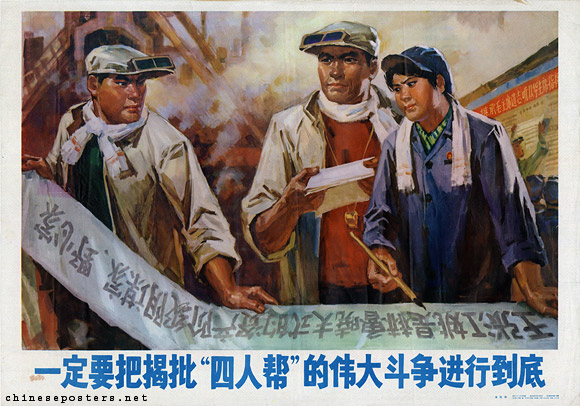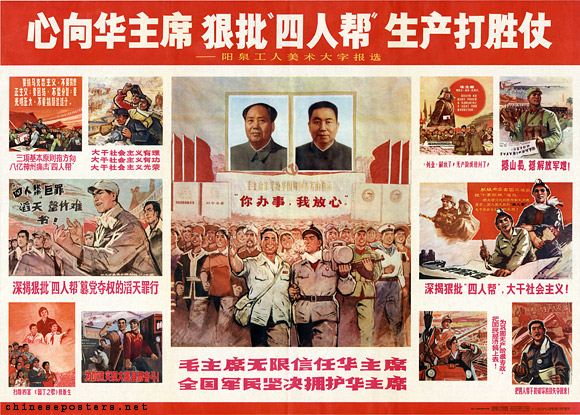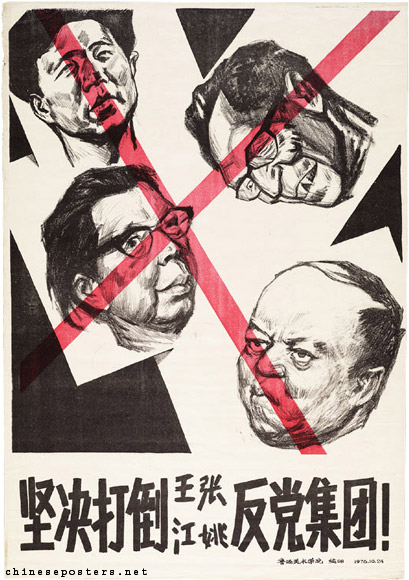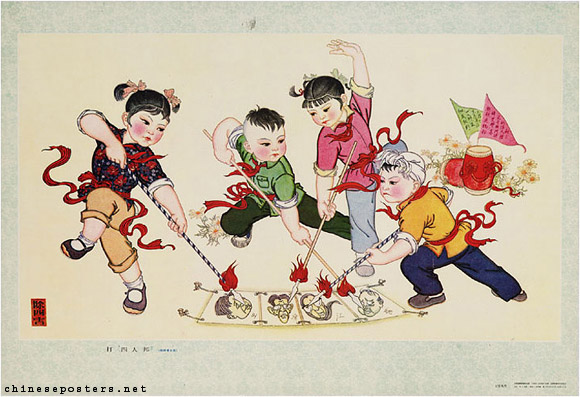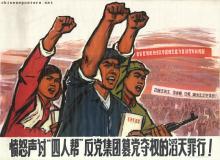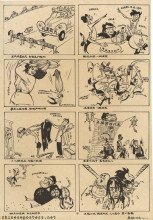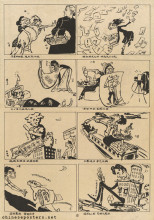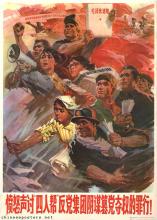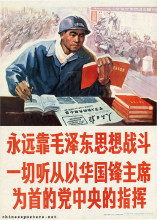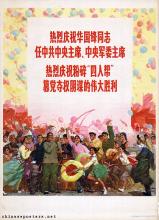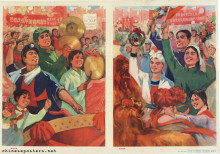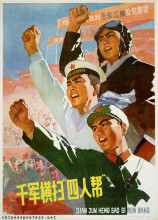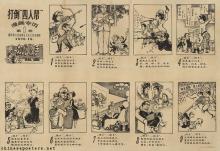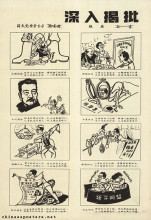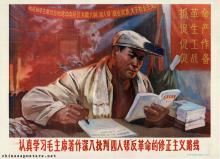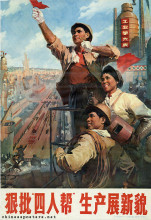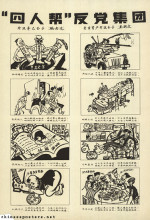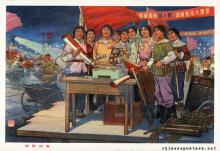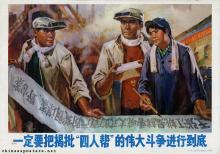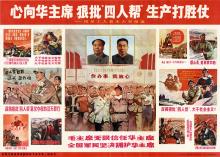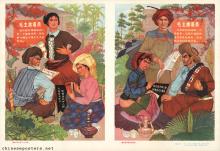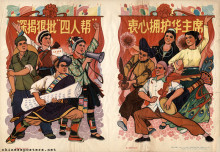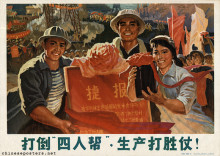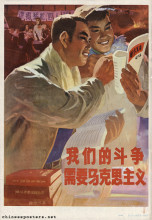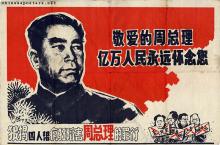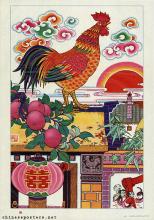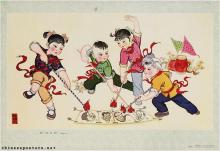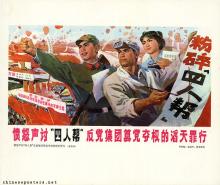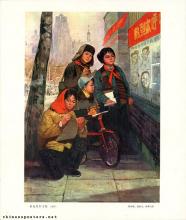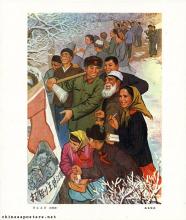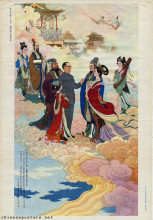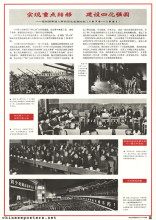The 'Gang of Four' (四人帮, Sirenbang) was formed by Mao Zedong's wife Jiang Qing (1913-1991), the Shanghai Propaganda Department official Zhang Chunqiao (1917-2005), the literary critic Yao Wenyuan (1931-2005) and the Shanghai security guard Wang Hongwen (1935-1992). They rose to power during the Cultural Revolution (1966-1976) and dominated Chinese politics during the early 1970s.
After Mao's death in September 1976, they were arrested; in 1980 they were tried in court. Jiang Qing and Zhang Chunqiao, seen as the leaders, received (suspended) death sentences, while Yao Wenyuan and Wang Hongwen, considered the henchmen, were given lengthy prison sentences.
After the Gang was arrested, a massive propaganda campaign was launched to discredit them and praise Mao's successor, Hua Guofeng. Nonetheless, relatively few striking posters were produced to accompany the campaign, although that was not really necessary. Most people had suffered personally from their reign. The poster below is one of the the harshest and most explicit I've ever seen.
Aside from an avalanche of cartoons poking fun at the four (cartoons being the favored medium for attacking political opponents), most posters consisted of scenes of jubilation or mass criticism. The poster below, produced in the famous New Year Print studio of Yangliuqing (Tianjin) in 1978, combines both cartoons and the traditional nianhua style.
A Great Trial in Chinese History - The Trial of the Lin Biao and Jiang Qing Counter-Revolutionary Cliques, Nov. 1980-Jan. 1981 (Peking: New World Press, 1981)
Wolfgang Bartke, Who was Who in the People’s Republic of China (München: K.G. Sauer, 1997)
Wolfgang Bartke, Biographical Dictionary and Analysis of China’s Party Leadership 1922-1988 (München: K.G. Sauer, 1990)
David Bonavia, Verdict in Peking - The Trial of the Gang of Four (London: Burnett Books, 1984)
Guo Jian, Yongyi Song & Yuan Zhou, Historical Dictionary of the Chinese Cultural Revolution (Lanham: The Scarecrow Press, Inc., 2006)
Helmut Martin, Cult & Canon - The Origins and Development of State Maoism (Armonk: M.E. Sharpe Inc., 1982)
Yan Jiaqi & Gao Gao (translated & edited by D.W.Y. Kwok), Turbulent Decade - A History of the Cultural Revolution (Honolulu: University of Hawai’i Press, 1996)
Yang Kelin (ed.), 文化大革命博物馆 [Museum of the Cultural Revolution] (Hong Kong: Dongfang chubanshe youxian gongsi, Tiandi tushu youxian gongsi, 1995)

